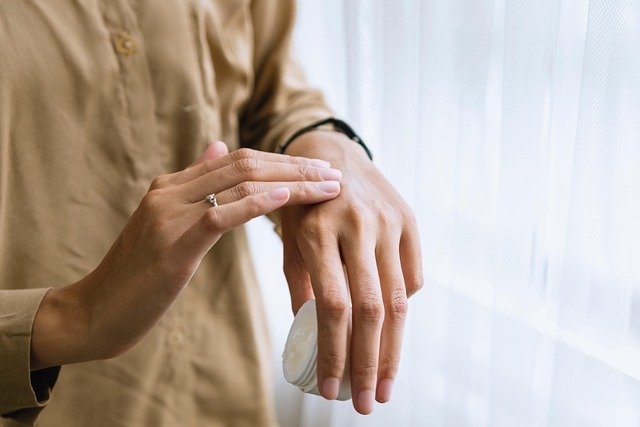Effective Treatments for Fading Age Spots: Medical and Home Options
Learning how to fade age spots starts with understanding their common causes, such as sun exposure and natural aging. Exploring safe skincare practices, protective habits, and available treatment options can help individuals make informed choices for managing skin appearance.

Age spots, also called liver spots or solar lentigines, typically appear on areas most exposed to the sun, such as the face, hands, shoulders, and arms. These flat, darkened patches result from years of sun exposure and are more common in adults over 50, though younger people with significant sun exposure can develop them too. While age spots are generally harmless and don’t require medical treatment, many people seek solutions to fade them for cosmetic reasons.
What Are the Best Treatments to Fade Age Spots?
Dermatologists offer several effective clinical treatments that can significantly reduce the appearance of age spots. These professional interventions typically work faster and more dramatically than over-the-counter options but may require multiple sessions and recovery time.
Laser therapy uses focused light energy to target melanin (the pigment in age spots) without damaging surrounding tissue. Most patients require 1-3 sessions spaced several weeks apart. Results appear gradually as the pigmented cells are shed from the skin’s surface.
Chemical peels involve applying a chemical solution to the skin, causing it to exfoliate and eventually peel off. The new skin that regenerates is typically smoother with less visible pigmentation. Depending on the strength of the peel, multiple treatments may be necessary.
Cryotherapy freezes age spots with liquid nitrogen, destroying the excess pigment. As the area heals, the skin appears lighter. This treatment is quick but may cause temporary discomfort and can occasionally result in scarring or discoloration.
Which Professional Procedures to Fade Age Spots Are Most Effective?
Intense Pulsed Light (IPL) therapy delivers multiple wavelengths of light to target pigmentation without disrupting the skin’s surface. It’s particularly effective for treating larger areas with multiple age spots. Most patients see significant improvement after 3-5 treatments.
Microdermabrasion uses tiny crystals to gently sand away the outer layer of skin. This minimally invasive procedure promotes cell turnover and gradually lightens age spots over multiple sessions. It’s less aggressive than some other treatments and requires little to no downtime.
Prescription-strength topical treatments containing hydroquinone, tretinoin, or corticosteroids can be more effective than over-the-counter options. These medications work by inhibiting melanin production or increasing cell turnover. They typically require several months of consistent use to achieve noticeable results.
What Dermatologist-Recommended Ways to Fade Age Spots Work Best?
Dermatologists often recommend a comprehensive approach that combines professional treatments with appropriate home care. This integrated strategy typically yields the best results for persistent age spots.
Consistent sun protection is perhaps the most important recommendation from dermatologists. Daily use of broad-spectrum sunscreen with SPF 30+ prevents existing age spots from darkening and new ones from forming. Wide-brimmed hats and sun-protective clothing provide additional defense.
Topical antioxidants like vitamin C serums can help brighten skin and reduce pigmentation when used regularly. These products work by inhibiting melanin production and providing protection against free radical damage that contributes to skin aging.
Retinoids (vitamin A derivatives) accelerate cell turnover, helping to fade age spots over time. Available in both prescription and over-the-counter strengths, these products should be introduced gradually to minimize irritation and always paired with sun protection.
What Are Effective Over-the-Counter Options for Age Spots?
Numerous non-prescription products can help fade age spots with consistent use. Look for ingredients like alpha hydroxy acids (glycolic acid, lactic acid), which exfoliate the skin and promote cell renewal, gradually lightening dark spots.
Products containing niacinamide (vitamin B3), licorice extract, or kojic acid can inhibit melanin production and reduce hyperpigmentation. These ingredients are generally well-tolerated and can be effective when used consistently over several months.
Brightening masks and exfoliating treatments can complement daily skincare by providing more intensive treatment on a weekly basis. These products typically contain higher concentrations of active ingredients to boost results.
What Professional Age Spot Treatments Are Available and at What Cost?
Professional treatments vary significantly in cost depending on the procedure, provider location, and number of sessions required. Understanding the investment required can help patients make informed decisions about their treatment options.
| Treatment | Average Cost Per Session | Sessions Needed | Expected Results |
|---|---|---|---|
| Laser Therapy | $300-$600 | 2-4 | 70-90% reduction |
| Chemical Peels | $150-$400 | 3-6 | 50-75% reduction |
| Cryotherapy | $100-$300 | 1-3 | 50-70% reduction |
| IPL Therapy | $400-$600 | 3-5 | 60-80% reduction |
| Microdermabrasion | $150-$300 | 6-10 | 40-60% reduction |
Prices, rates, or cost estimates mentioned in this article are based on the latest available information but may change over time. Independent research is advised before making financial decisions.
Many dermatologists offer package pricing for multiple sessions, which can reduce the overall cost. Additionally, some medical spas may provide these treatments at lower prices than dermatology clinics, though patients should ensure providers are properly qualified and experienced.
Are There Natural Remedies for Fading Age Spots?
For those preferring natural approaches, several home remedies may help lighten age spots, though results are typically more subtle and take longer to appear than with professional treatments.
Apple cider vinegar contains alpha hydroxy acids that may help exfoliate the skin and reduce pigmentation. Dilute before applying to avoid irritation and use consistently for potential results.
Aloe vera gel has natural healing properties and contains compounds that may help lighten skin discoloration. Fresh gel from the plant is most effective and can be applied directly to age spots.
Green tea extract is rich in antioxidants that may help protect skin from damage and reduce pigmentation. Both topical application and oral consumption may provide benefits for skin health.
This article is for informational purposes only and should not be considered medical advice. Please consult a qualified healthcare professional for personalized guidance and treatment.




